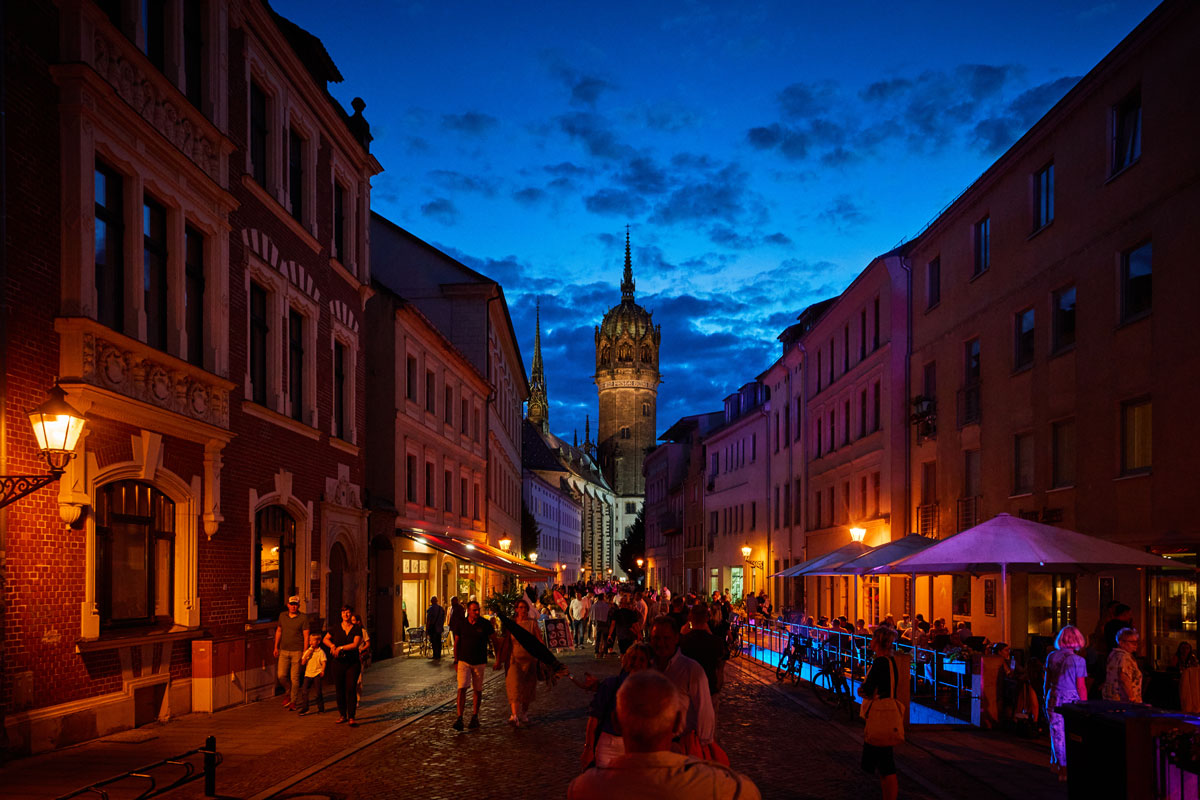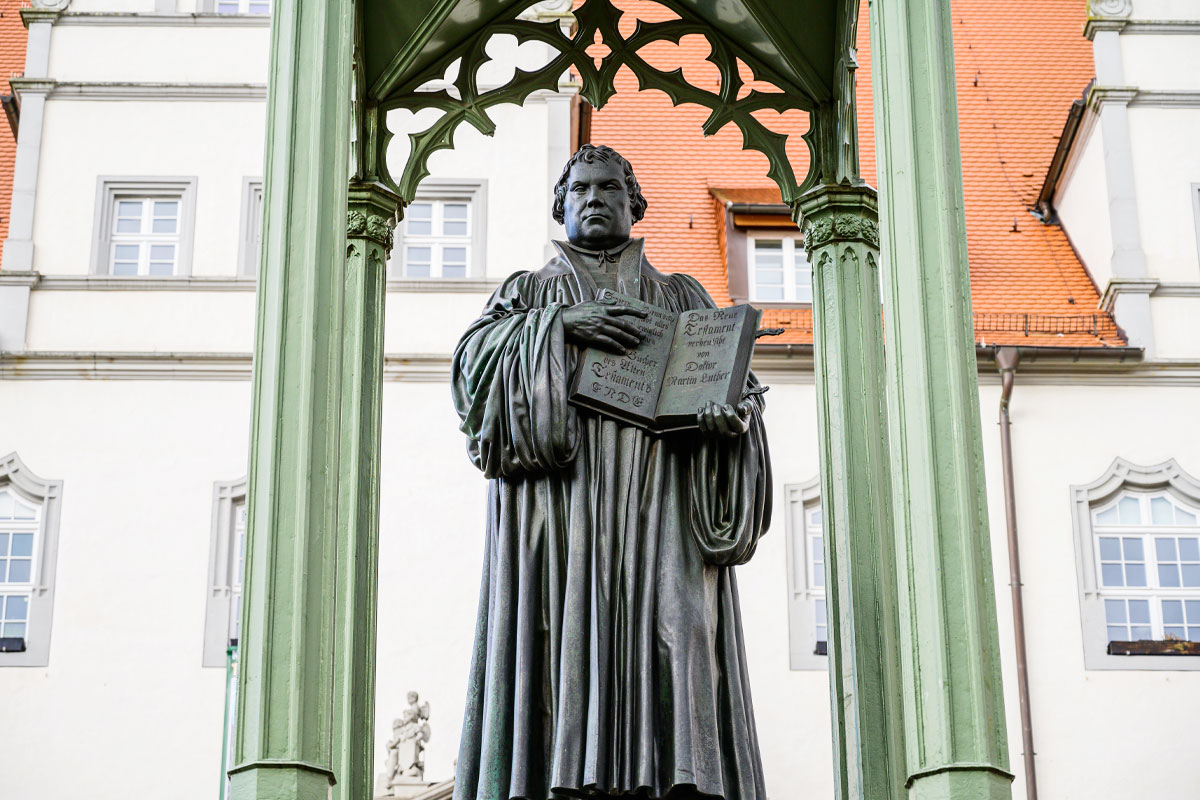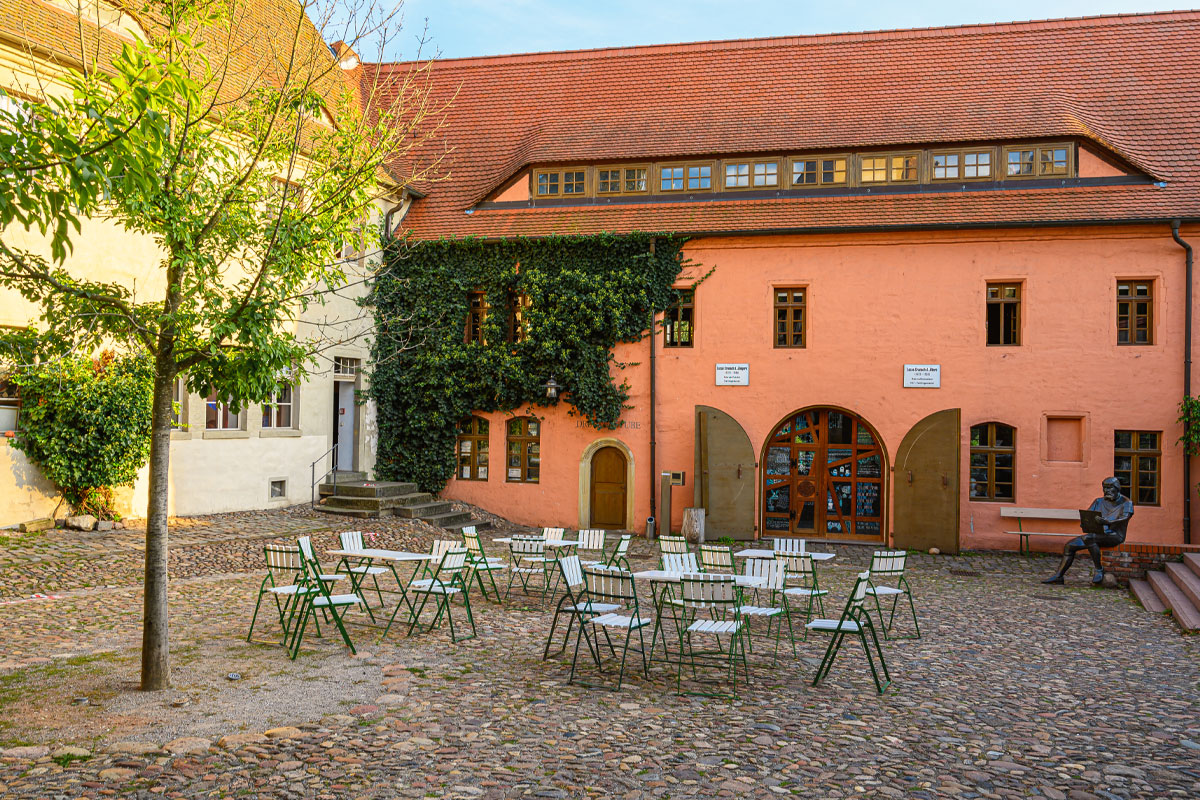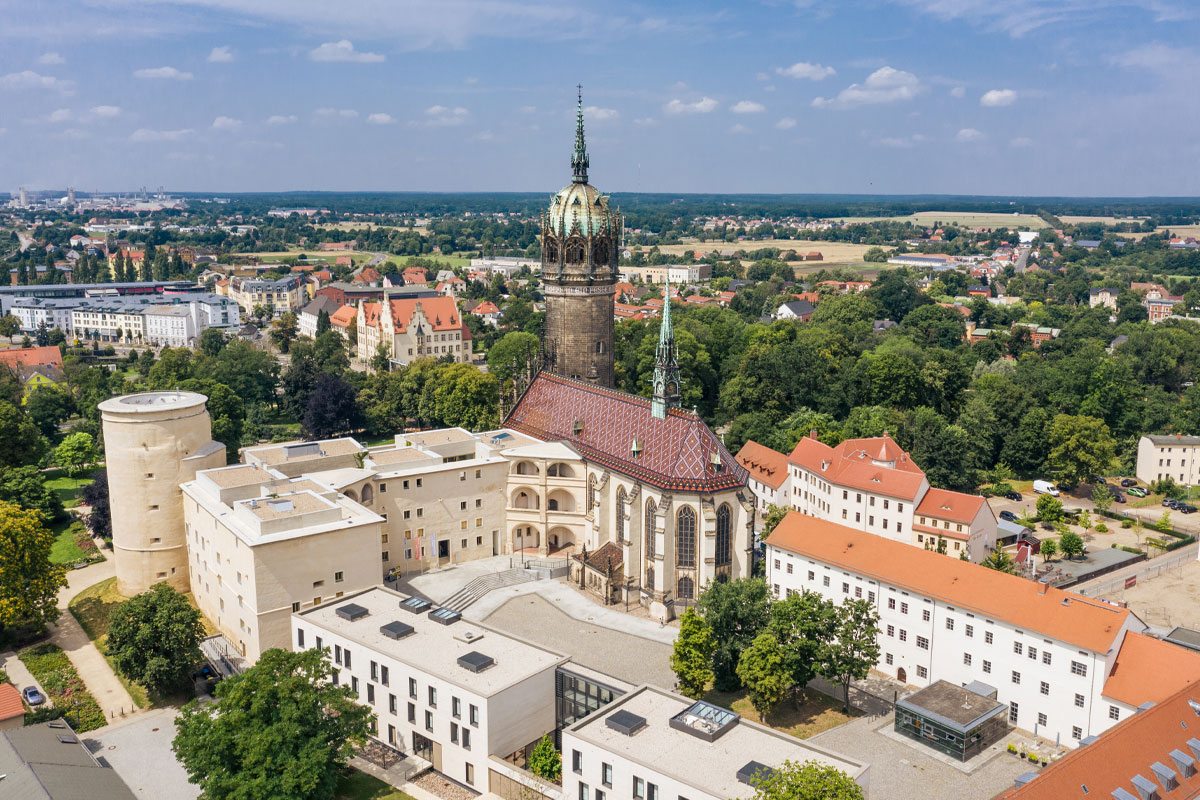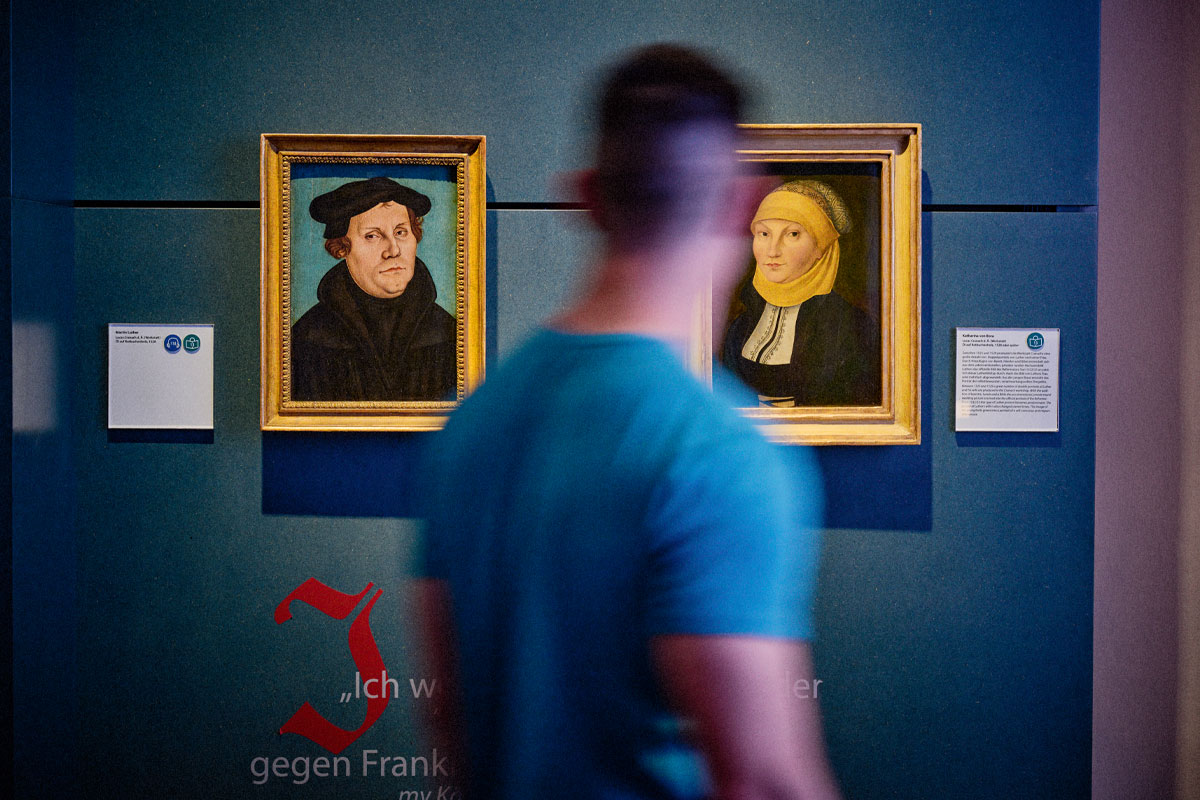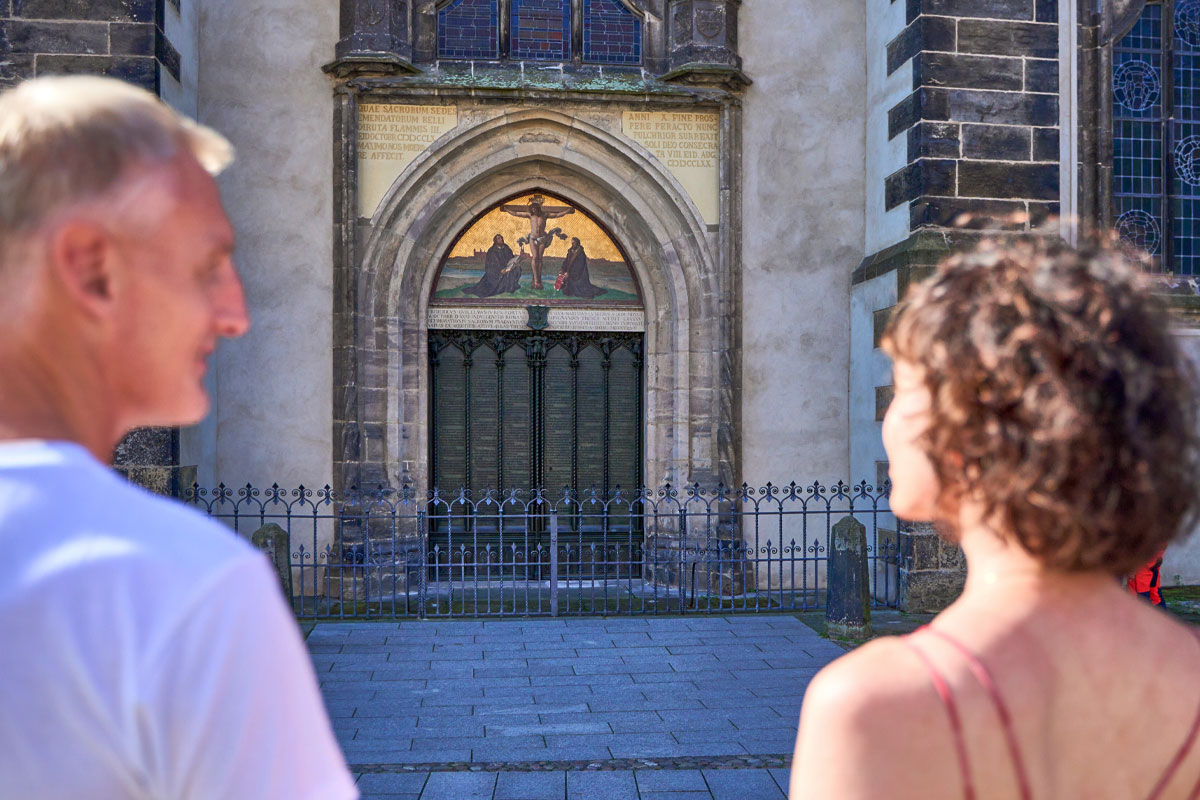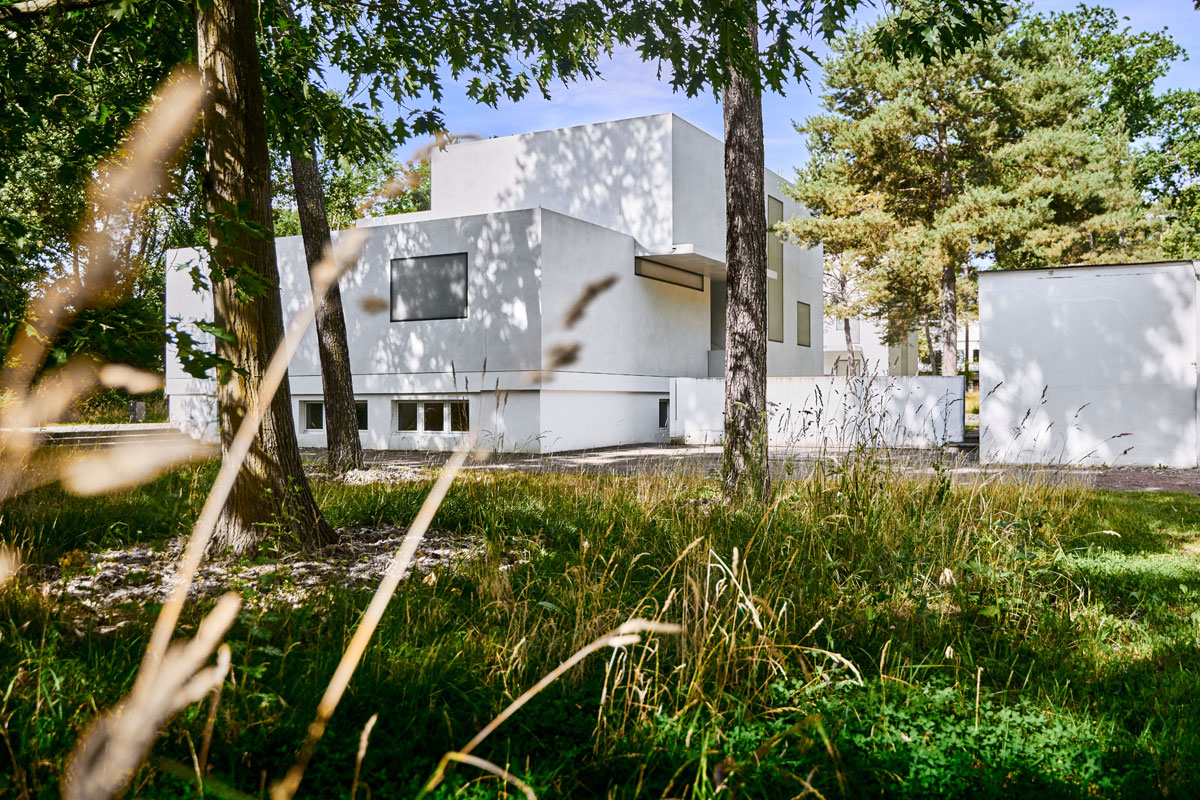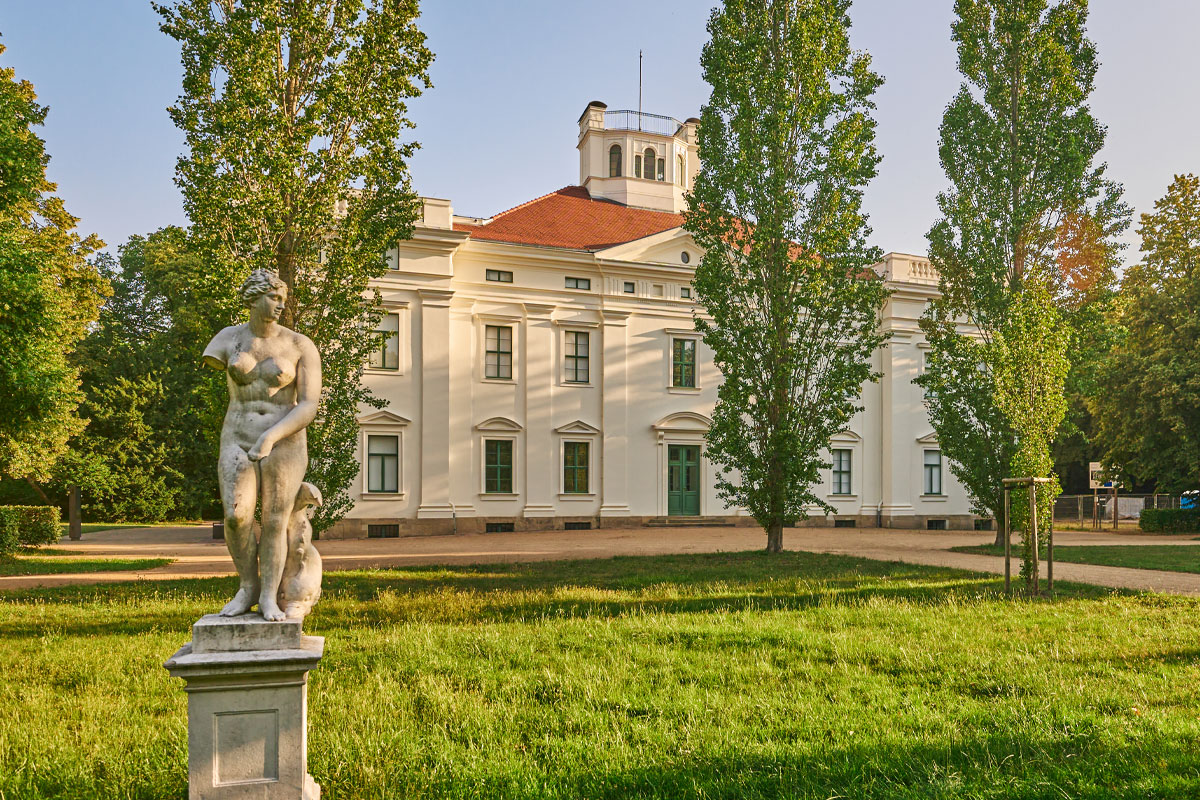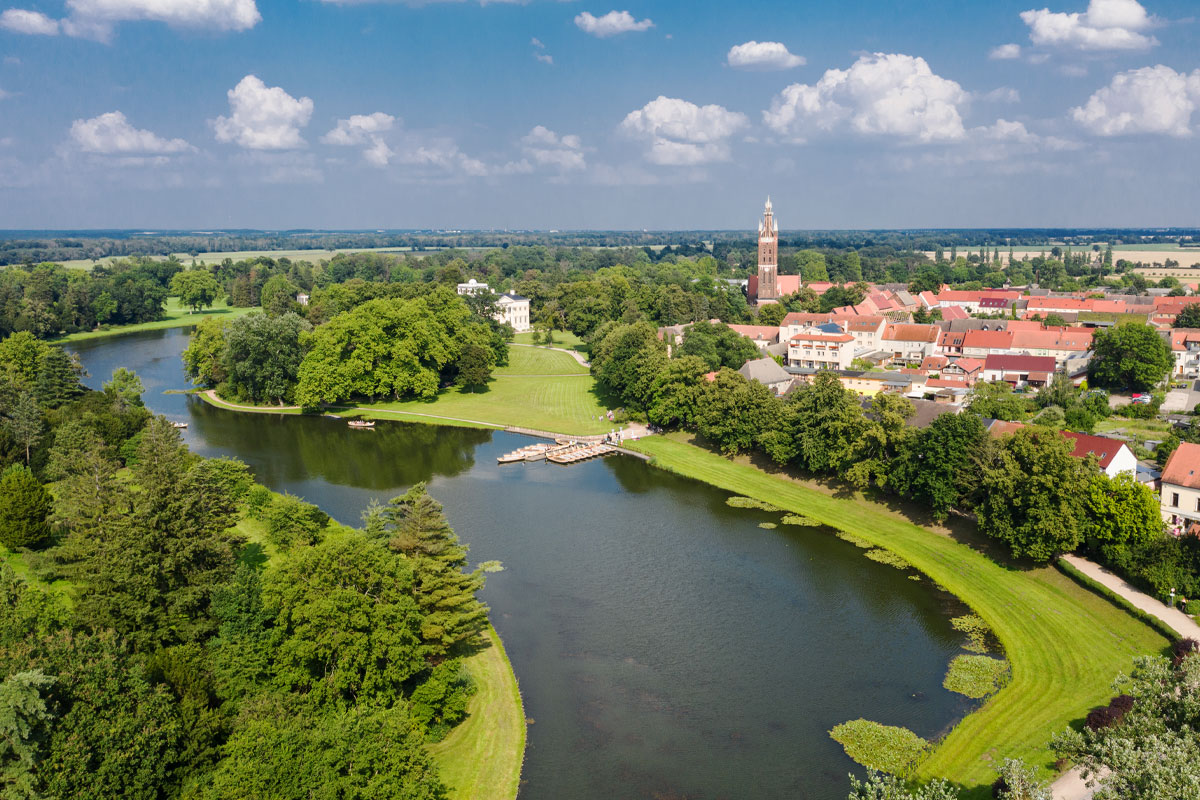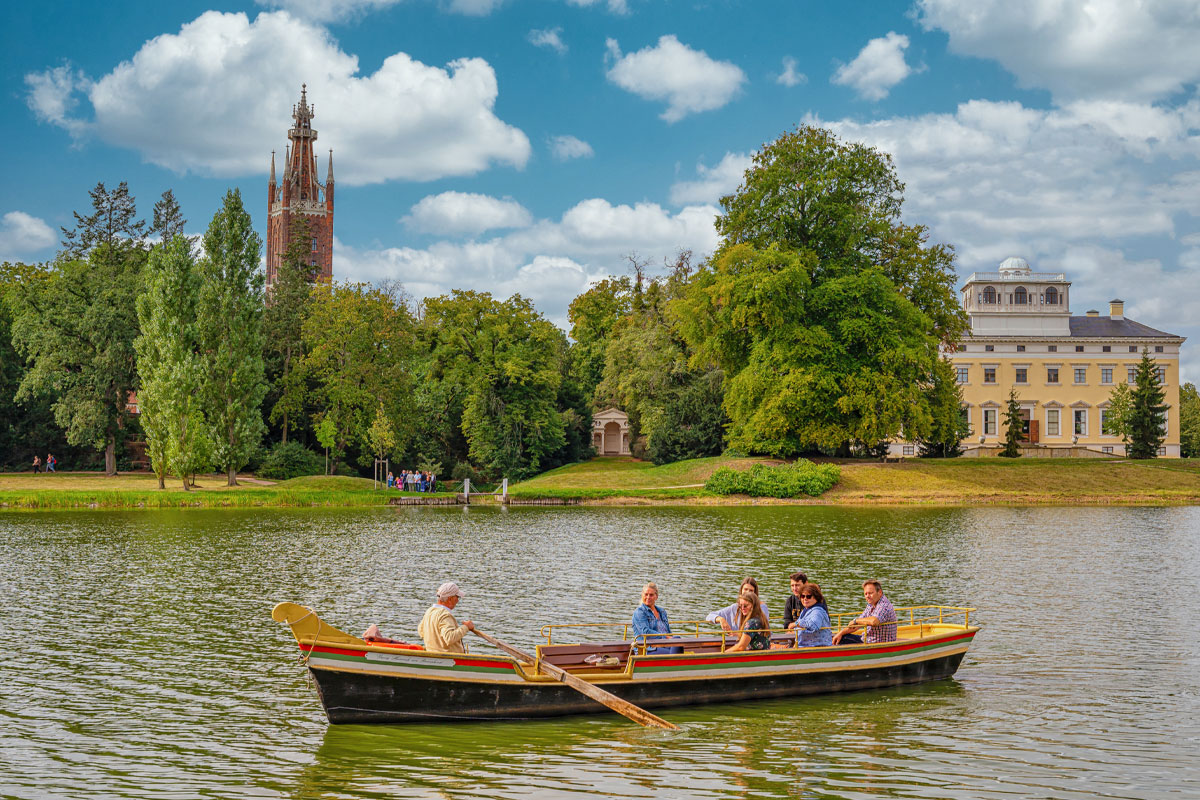World heritage and authentic historical locations
Set your sights on these sites
Here in the heart of Germany, you’ll discover a density of UNESCO World Heritage sites that is quite unique. You can visit four amazing sites over just 35 kilometers: the Luther sites in Wittenberg, the Garden Kingdom of Dessau-Wörlitz, the Bauhaus plus Masters’ Houses and other authentic buildings, and the Middle Elbe Biosphere Reserve. Numerous developments of global importance have their origin in the region now known as Saxony-Anhalt. This was the cradle of the Protestant movement, and where the Bauhaus movement has its deepest roots. From this place, the innovative Bauhaus approach spread throughout the world and shaped the ideas of modern design. This World Heritage Region offers you a splendid contrast to the surrounding cities and metropolises and can be your refuge for a few days – an oasis of cultural wonders and nature in all its glory.
- The Best Western soibelmanns is located in the historic center of the Luther town of Wittenberg.
- The Martas Hotel Wittenberg welcomes you in stylishly furnished rooms.
HERE IS THE MOST IMPORTANT TIP UP FRONT:
The WelterbeCard (World Heritage card) gives you free access to more than 125 tourist attractions and also allows you to use local public transport in the Anhalt-Bitterfeld and Wittenberg districts free of charge. A 3-day card costs just 44.90 euros per person.
An example itinerary gives you an overview of the best attractions and most important destinations in the World Heritage Region. The stated times provide guidance for planning your trip.
YOUR VACATION IN THE WORLD HERITAGE REGION COULD LOOK LIKE THIS:
Day 1
- Set up camp in the Luther town of Wittenberg for a few days. Traveling from Berlin with the ICE train is really easy, fast (45 minutes) and comfortable – check into a hotel and discover Wittenberg, either independently or on a guided tour.
- The Asisi Panorama “Luther 1517” is a unique panoramic art installation by Yadegar Asisi, which offers you a glimpse of Wittenberg as it was in the Late Middle Ages. The 360° paintings create fascinating images that let you witness how Martin Luther initiated and drove the Reformation.
- In Wittenberg’s old town, Lukas Cranach the Elder had his studio and ran a printing works. Today, the Cranach courtyards regularly showcase fascinating temporary exhibitions about printing, art, and language.
- You can enjoy fresh, home-made cakes in the Kartoffelhaus (potato house) restaurant.
- In the evening, why not treat yourself to a nightcap in the Café BitterSuess, the Charles Bar or the Irish Harp Pub?
OUR TIP:
At the Lutherhochzeit (Luther’s Wedding) festival, Wittenberg turns the clock back 500 years: every year on the second weekend of June (so, June 14 to 16 this year), this festival celebrates the Middle Ages with sensational and daring events, jugglery, and amusement. In eight themed areas, you can celebrate, feast and dance in honor of Martin Luther and his wife Katharina von Bora.
Day 2
- Don’t spare on breakfast: an exciting day in Dessau is on the agenda! This is where, in the 1920s, the Bauhaus grew and flourished, and became an art and architectural movement that spread throughout the world. Explore authentic sites with outstanding architecture. The Bauhauslinie bus conveniently takes you to all these buildings.
- Start at the Bauhaus Museum, so that you can understand the ideas behind the movement. Since 2019, the Bauhaus Foundation has showcased an extensive range of roughly 50,000 exhibits.The school where Walter Gropius and other masters taught was housed in the Bauhaus Building.
- The Masters’ Houses are a collection of modular buildings made of industrially prefabricated parts.
- Within sight of the new Bauhaus Museum, the Teehäuschen combines a Mediterranean restaurant, a homely ice café, and a bar with lounge, all under one roof.
- If art is what you fancy today, visit the recently opened Anhalt Picture Gallery in Georgium Castle and gaze at art treasures from various epochs: from the Reformation and Enlightenment to Modernism.
- Wörlitz Park is another UNESCO World Heritage site. If you’re a fan of nature, you could take a romantic gondola ride (45 minutes) on the lakes and canals of the extensive Wörlitz Park.
- For dinner, Dessau-Wörlitz offers you a diverse selection of restaurants:
- The Ringhotel Am Stein lies right at the eastern entrance of Wörlitz Park and uses fresh ingredients for creative regional cuisine.
- The Zieglers serves German dishes with a Mediterranean touch and makes use of fresh, local ingredients. As a World Heritage card holder, you can enjoy a free aperitif or first-class dessert.
- The Gasthof Zum Eichenkranz holds regular events and combines culinary delights with comedy, music, and dancing in historical surroundings.
OUR TIP:
Every year on the anniversary of the posting of his thesis, Wittenberg holds its Reformation Festival. In the market square and other original locations of the Reformation, guests can experience an historic spectacle, including festive services and concerts in churches, a Renaissance music festival, and a colorful market with medieval flair.
Day 3
- Don’t spare on breakfast: an exciting day in Dessau is on the agenda! This is where, in the 1920s, the Bauhaus grew and flourished, and became an art and architectural movement that spread throughout the world. Explore authentic sites with outstanding architecture. The Bauhauslinie bus conveniently takes you to all these buildings.
- Start at the Bauhaus Museum, so that you can understand the ideas behind the movement. Since 2019, the Bauhaus Foundation has showcased an extensive range of roughly 50,000 exhibits.
- The school where Walter Gropius and other masters taught was housed in the Bauhaus Building.
- The Masters’ Houses are a collection of modular buildings made of industrially prefabricated parts.
- Within sight of the new Bauhaus Museum, the Teehäuschen combines a Mediterranean restaurant, a homely ice café, and a bar with lounge, all under one roof.
- If art is what you fancy today, visit the recently opened Anhalt Picture Gallery in Georgium Castle and gaze at art treasures from various epochs: from the Reformation and Enlightenment to Modernism.
- Wörlitz Park is another UNESCO World Heritage site. If you’re a fan of nature, you could take a romantic gondola ride (45 minutes) on the lakes and canals of the extensive Wörlitz Park.
- For dinner, Dessau-Wörlitz offers you a diverse selection of restaurants:
- The Ringhotel Am Stein lies right at the eastern entrance of Wörlitz Park and uses fresh ingredients for creative regional cuisine.
- The Zieglers serves German dishes with a Mediterranean touch and makes use of fresh, local ingredients. As a World Heritage card holder, you can enjoy a free aperitif or first-class dessert.
- The Gasthof Zum Eichenkranz holds regular events and combines culinary delights with comedy, music, and dancing in historical surroundings.


